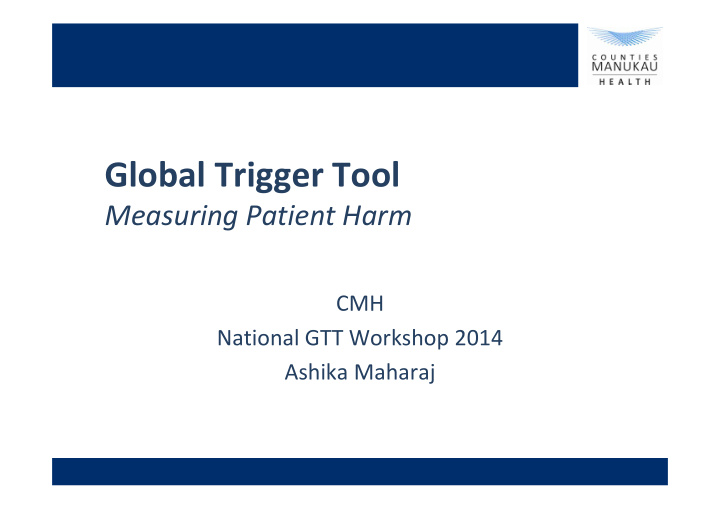



Global Trigger Tool Measuring Patient Harm CMH National GTT Workshop 2014 Ashika Maharaj
Improvement Plan: Focus on reducing opioid related harm
Background Revelations from 2011 ADE data: • 30% of medication ‐ harm related to Opioids • 23% of all harm was Constipation • Risk highest on surgical wards Forum to discuss findings (mid 2012) Retrospective detailed analysis of a surgical ward requested
New Data Collection Tool
Baseline Data – Orthopaedic ward N = 131 Opioids = 114 Harms = 49
Opioids implicated in Harm Morphine Oxycodone Codeine Tramadol Other
Projects identified Project A Project B • Tackling high rate • Tackling opioid ‐ of opioid ‐ related related constipation oversedation
Results: Focusing on Constipation 14% Nausea & Vomiting 114 131 49 Patients Records Opioid-related prescribed 12% Reviewed Harm Oversedated opioids 8% Other 32/ 49 (65%) Constipation 25/ 32 (78%) on Regular opioids 22 /25 (88%) Charted laxatives 16/25 (64%) not 14/22 (63%) 12/22 (55%) monitored ‘Delayed Delayed regularly Charting administration
Change concepts and ideas – Project A Idea for Testing in a PDSA Theory and prediction about what will happen when you test this idea Regular Bowel charts for all Regular bowel monitoring will identify problems early patients on opioids allowing for effective intervention earlier PRN Laxatives charted in If bowel charts are working well then nurses will be conjunction with opioids alerted to administer laxatives early routinely Regular Laxatives charted in Laxatives to be administered in conjunction with conjunction with opioids opioids daily routinely Leaflet informing patients of constipation as an Patient Leaflets adverse effect of opioids and to let nurses know if bowels have not moved as per normal.
Results
What didn’t work Changes that didn’t result in improvement • No change to outcome measure (Constipation rate) • Improvement in use of full bowel chart but not sustained • Charting: no change • Administration: no change
Why? Needed better engagement to overcome barriers • Nursing • Medical Staff More drivers for the project • Increased presence on the ward • Needed engagement of pain team • Engagement of pharmacy Projects need to be short and sharp
Recommend
More recommend